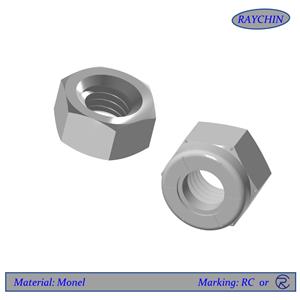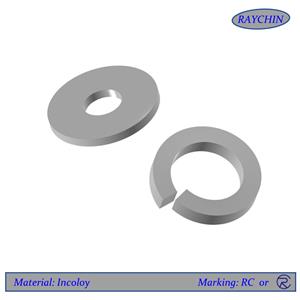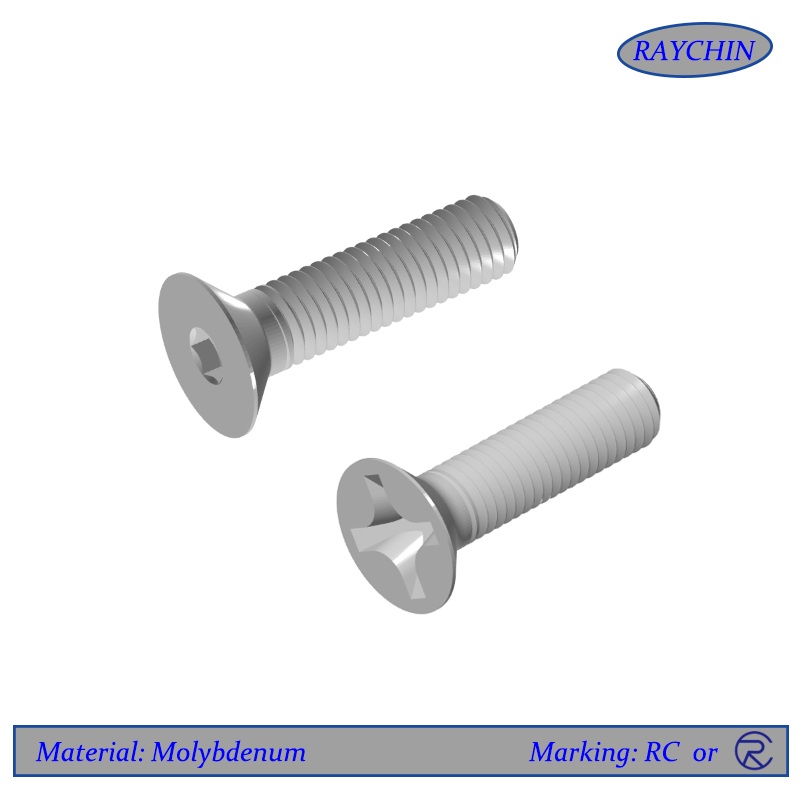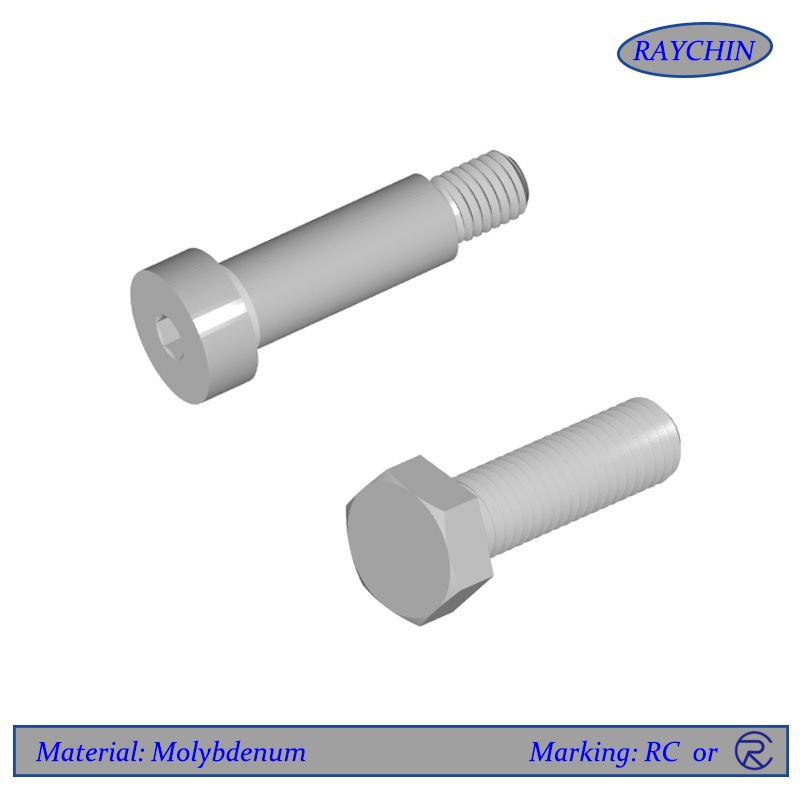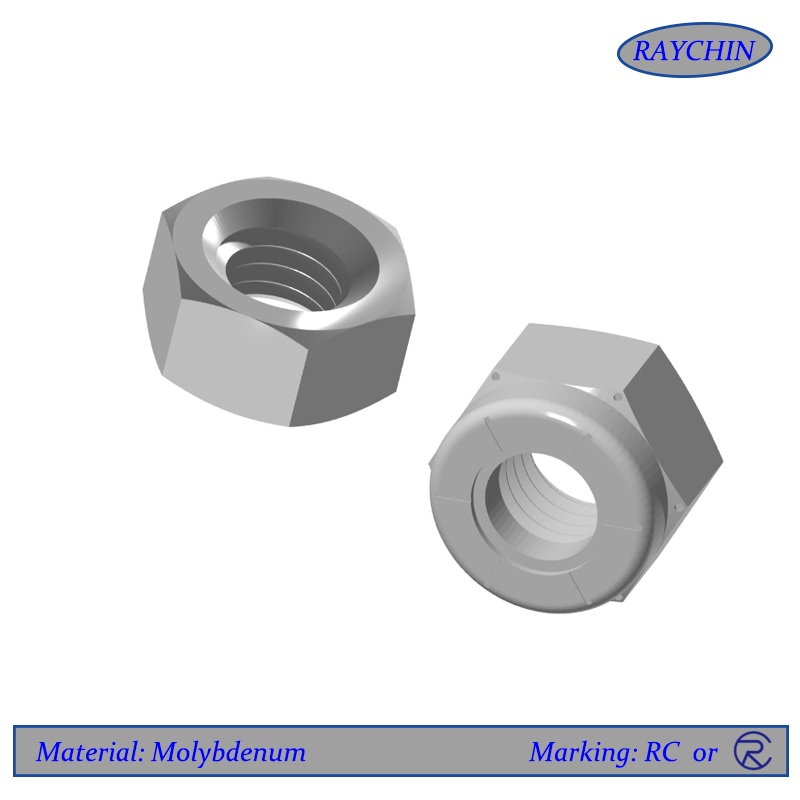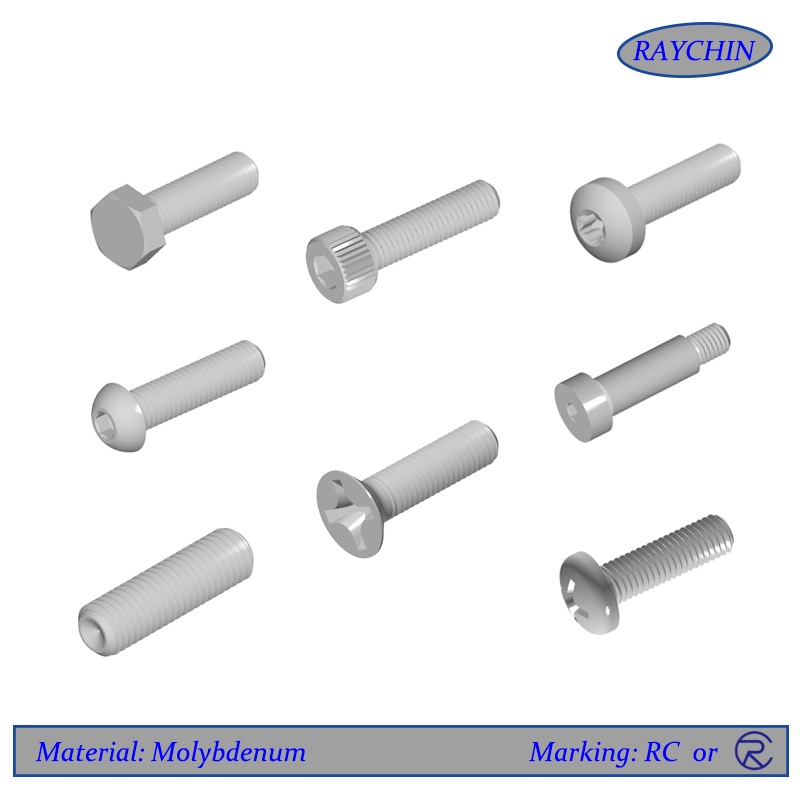Molybdenum Flat Head Screws
Molybdenum Flat Head Screws
Molybdenum flat head screws possess a very high melting point of 2620°C, a low coefficient of thermal expansion and a high level of thermal conductivity. Because molybdenum screws have the ability to withstand extremely high temperatures without changing shape, expanding or softening significantly, they are ideal for high strength / high temperature applications that are shielded from oxygen. Exposing molybdenum flat head screws to oxygen above 600°C will cause them to readily oxidize.
As a result, molybdenum flat head screws find their way into high temperature vacuum furnaces, glass production, military and space applications where oxygen is not present.
When extreme high temperature stability & strength are required
· Maintains strength at elevated temperatures
· Low distortion at high temperature
· Molybdenum must be used in vacuum or inert gas at high temperatures
· Common molybdenum grades and specifications
· Molybdenum flat head screw features and benefits
· Molybdenum datasheet
Resources: Molybdenum Torque Spec
Screw Types: Button Head Cap Screws, Flat Head Screws, Hex Cap Screws, Pan Head Screws, Set Screws, Socket Head Cap Screws, Tamper Resistant Security Screws
Molybdenum Flat Head Screw Features and Benefits
Molybdenum flat head screws are characterized by having a head with a top flat surface (which can feature either a slotted, phillips or allen driver) and bottom that is cone shaped or countersunk. With this design, the head of the screw can align flush or below the surrounding surface having obvious benefits.
Molybdenum Slotted vs. Phillips Driver
Slotted Head Advantages | Phillips Head Advantages |
· Slotted head screws tend to strip less than Philips, especially in harsh environments · Slotted heads are typically better in applications where it's going to be unscrewed and re-done periodically, as the head tends to wear less. · In dirty environments, a flat head is much easier to clean out | · Phillips head offers a much stronger joint since it can tolerate more torque. |
Countersink Angle
For most flat head screw designs the angle of countersink is usually 82° for UNC and UNF applications however other angles ranging from 60° -120° could be specified.
Thread Type | Normal Flat Head Countersink Angle |
UNC / UNF | 82° |
Aerospace | 100° |
ISO Metric / Imperial | 90° |
Common Molybdenum Screw Grades and Specs
Molybdenum (Commercially Pure)
Because of its high melting point of 2620C and its good strength, pure molybdenum finds it niche in high temperature vacuum or inert environments without oxygen.
Molybdenum Specifications: ASTM B386, ASTM B387, Type 361
Molybdenum(cp) | Mo |
Typical% | 99.95 |
TZM - Titanium / Zirconium / Molybdenum Alloy
This alloyed version of molybdenum provides enhanced strenght at elevated temperatures and is excellent for support structures in vacuum furnaces or other high temperatuer and oxygen free environments.
TZM Specifications: UNS R03630, ASTM B384, ASTM B385, ASTM B386, ASTM B387
Moly TZM Alloy | Mo | Ti | Zr |
Typical% | Bal | 10.5 | 0.08 |


